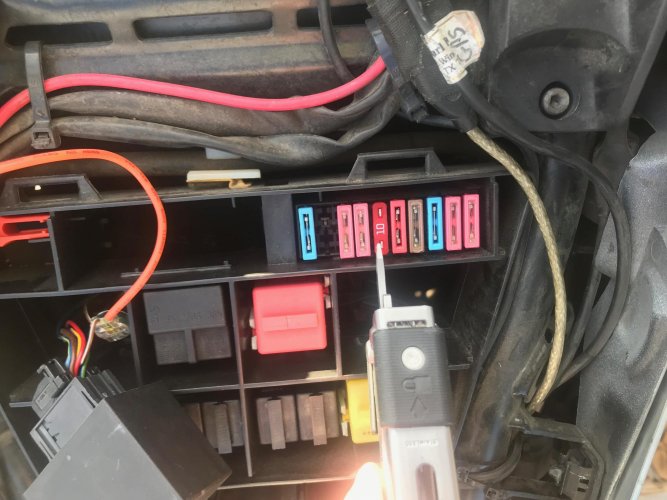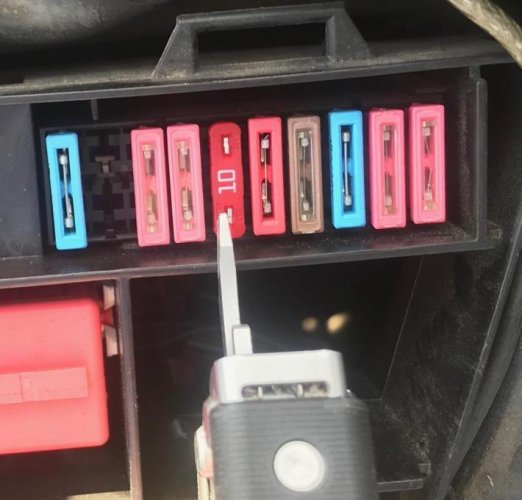(apologies if this has been answered, if so, can someone please provide link?)
Hello, my RT keeps blowing a fuel pump fuse. Blew it once a month ago and has been generally fine since. I didn't know what it was until I blew it twice on the way from work on the same day last week. It was over 100 degrees in slower (albeit and unfortunately normal) bumper to bumper traffic inching along the "easiest" way home....which is normall 65mph. The other route has lights and is max 55mph...but is an option I should try until they fix the roads in East El Paso...
Prev owners installed a centech aux fuse box with wiring for radar detector, garage door open/close via signal canx button, usb charging, and front-wheel forward-facing lighting....(the first two I don't use and need to completely remove.) This could be related, however, I started removing the wires to whichever ones weren't critical for forward, safe, momentum.
The garage door open/close wiring ties into a brown and white cable with some disc thing. I need to get a good pic and add to this post.
The 10a fuse is for the fuel pump. It was suggested to find a wiring problem related to this component.
Has anyone dealt with this and could offer advice?
Of course, now that I look at this pic more, the other fuses are different...or the 10a is different! ha! Either way, the first one looks blown too on the top! I'll see what local auto parts dealer has as far as these diff (BMW) style fuses go. Maybe one tripped the other?
Pic was attached sidways!

Hello, my RT keeps blowing a fuel pump fuse. Blew it once a month ago and has been generally fine since. I didn't know what it was until I blew it twice on the way from work on the same day last week. It was over 100 degrees in slower (albeit and unfortunately normal) bumper to bumper traffic inching along the "easiest" way home....which is normall 65mph. The other route has lights and is max 55mph...but is an option I should try until they fix the roads in East El Paso...
Prev owners installed a centech aux fuse box with wiring for radar detector, garage door open/close via signal canx button, usb charging, and front-wheel forward-facing lighting....(the first two I don't use and need to completely remove.) This could be related, however, I started removing the wires to whichever ones weren't critical for forward, safe, momentum.
The garage door open/close wiring ties into a brown and white cable with some disc thing. I need to get a good pic and add to this post.
The 10a fuse is for the fuel pump. It was suggested to find a wiring problem related to this component.
Has anyone dealt with this and could offer advice?
Of course, now that I look at this pic more, the other fuses are different...or the 10a is different! ha! Either way, the first one looks blown too on the top! I'll see what local auto parts dealer has as far as these diff (BMW) style fuses go. Maybe one tripped the other?
Pic was attached sidways!






